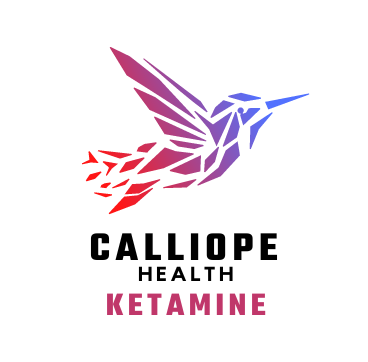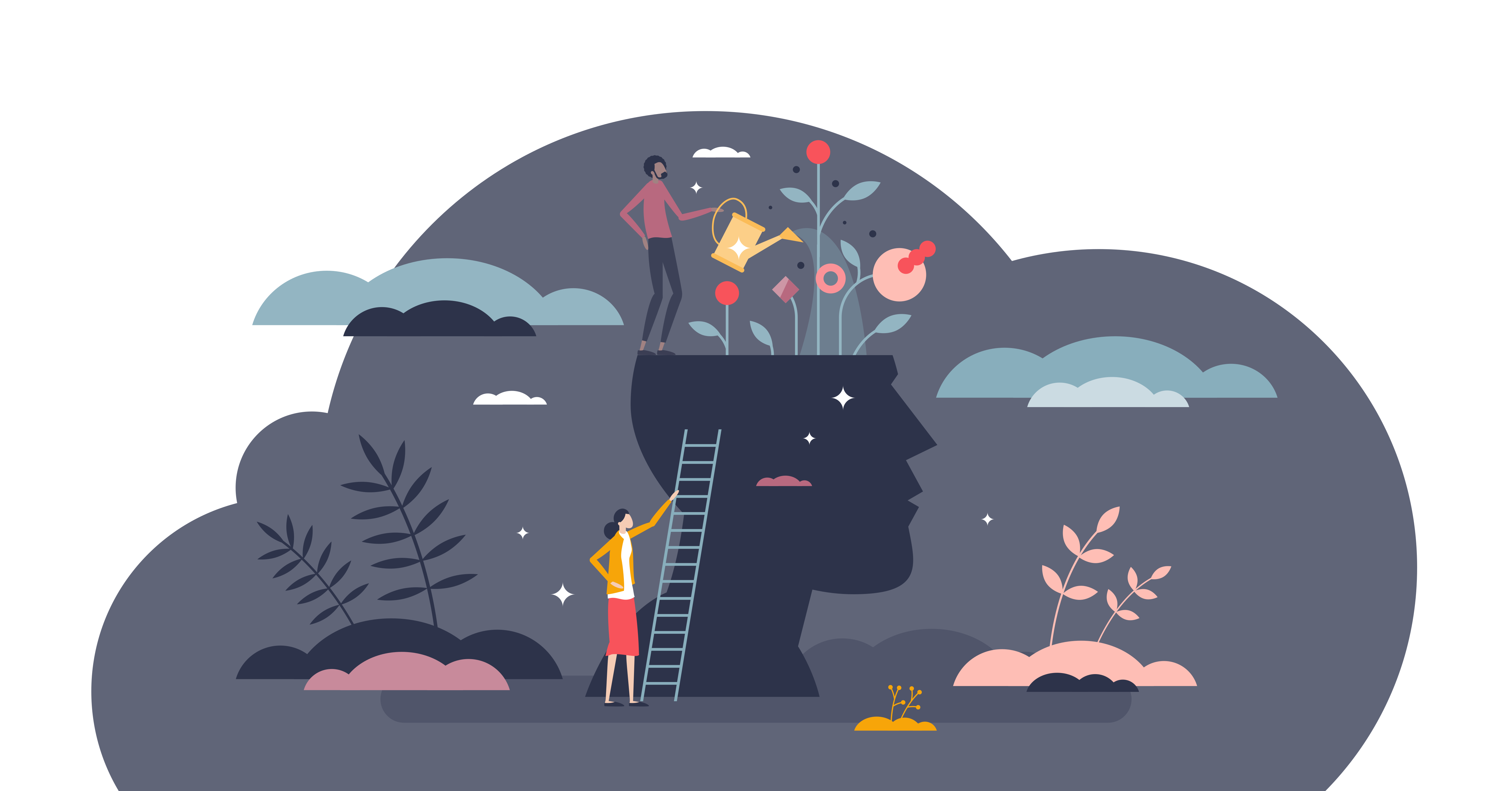
Ketamine enhances your ability to see relationships and make connections
At Calliope Health we feel it’s really important to help you cultivate a relationship with Ketamine—an experience with it in which you’re afforded the time and skills to memorize how your mind works after it’s been exposed to ketamine.
When you add ketamine to your personal reflection, healing, and your spiritual and emotional development, it’s a little bit like getting a bird’s eye view of a maze that you’ve been stuck in. Some of you—painfully—know what I mean by feeling stuck in that maze of depression, anxiety, and depersonalization that goes along with depression.
Unsticking mental habits with ketamine’s neuroplasticity in the brain
As you know, the effects of ketamine dose only don’t last short period—one to two hours is typical in a therapeutic dose—compared with other psychedelics like psilocybin or MDMA which can last 6-10 hours. In fact, ketamine’s so-called window of plasticity—that neuroplastic growth period after a treatment when scientists can literally see what they call dendritic spines growing in the brain. These dendritic spines start branching and networking as if they’ve been given fertilizer. This rapid neurogenesis can last only a day for some people. If your mental habits seem really stuck and beyond your direct control, we know that repeated and regular ketamine sessions causes an improvement in most people.

For reasons we don’t fully understand, some people have an experience of heightened plasticity that does last much longer and probably because my life’s work is steeped in the idea that we can change we’re not just dealt a hand of cards and that’s that we can change our mental habits. Like one of my favorite books The Brain That Changes Itself talks about how the brain is this recursive organ—it observes itself and changes itself— and because we can change habits and behaviors we can literally reshape our brain.
Opening of new inner worlds with a ketamine journey
I want you to have the kind of experience that I had which was that every ketamine journey is a chance to add something to what you already know about this puzzle that’s unfolding—different parts of you that you’re not always given access to. You get familiar with the twists and turns and the altered sensory world, and use this experience to look at directly it’s things that you may not ever normally want to look—painful things, difficult things that need healing—but you can look at them with the eyes of peace.
The eyes of pure love and calmness. With these eyes new worlds await you.
Having said this, it’s quite a claim. I would be remiss if I didn’t add this caveat: Ketamine isn’t a cure for all of your problems. We’re not going to help you use ketamine to cover up, or numb or escape or chase a high. This isn’t cannabis, helping you mellow out routinely after having “a day,” and it’s not an opioid that’s going to simply blast you off.
Ketamine is too sophisticated to waste on just having fun, and of course it’s only given if you meet special criteria that warrant our physicians prescription for your health.
Mindset for a ketamine journey
I want you to go into your experience with ketamine with a learner’s mindset—a beginner’s mind.
What am I here to learn?
Even if something comes up for you that you don’t like—a fear or a memory or a taboo desire—you can ask it what it has to offer you. You don’t have to get too bogged down with making sense of everything. In fact I think analysis overbakes the cake. It can be too overwhelming. Instead like we say in IFS therapy, all you have to do is be in Self. Which is sort of like being the Orchestra Conductor. I’ll talk about that in a moment.
If something’s confusing, you can ask it to reveal more you. Interact with it. If it’s too intense, you can ask it to slow down. You extend love to your whole body through the whole process—beginning during and after. You extend love, trusting that the medicine is doing its job.
Ketamine turns down the brain’s fault-finding “default mode network”
Ketamine is a safe medicine that has an incredible ability to give what we call your Default Mode Network—that roving part of the brain that scans for problems—it gets a break from all that doing. A break from performing.
You can just be.
It’s pure existence.
And, trust me, I say those words as if it makes sense: “Pure existence.” But don’t be surprised if you encounter powerful paradoxes, dualities that this standard operating system, the Default Mode Network in our brain, doesn’t really allow us to put side by side. For example, my experience—this may not be yours—I had an encounter with a deep sense of existence, of belonging, by watching the medicine do its work of kind of quieting the prefrontal cortex, quieting the limbic system—the emotions—and then somehow allowing me to exist just with my brain stem working. There was a temporary sense that I didn’t exist. I could peacefully and calmly look at the sense of
non-existence.

These aren’t everyday thoughts! The “manager” role of the prefrontal cortex goes really quiet and you can have experiences that can’t really be described as thoughts. They’re not bodily experiences, because ketamine is a dissociative anesthetic that takes you out of your body.
It may be the quietest, most peaceful, pure, true experience of your deepest self, deep inside where the brain stem resides and just “knows” that you exist. It’s very, very subconscious. During a ketamine journey you feel none of the normal fear or panic that often goes with brain stem activation.
How ketamine stimulates a “Big Mind” flow state
Ketamine seems to stimulate a very useful state of mind that’s well known to many of the spiritual traditions. In psychology we call it a flow state. A kind
of delicious version of executive function which you effortlessly perform at whatever level is demanded of you. You’re free from rigid limitations, and see old things with new eyes. You’re calm, compassionate and courageous. You can rapidly make connections that may have eluded you before.
In the vernacular of Internal Family Systems Therapy, ketamine expands your Self that I mentioned earlier. Don’t confuse the IFS term “Self” with the old
psychoanalytic term that means ego. Self or “soul” is the kind of core operating system, the bare bones of your mind that is somehow above and much more than any one part of you. It’s the whole itself. Self is not driven by your emotions or anxiety or fears but is simply able to focus on what’s most important—making connections, healing and balancing parts of you that carry pain. The Buddhists would call this a state of non-attachment. Psychologists would call it secure attachment: You can hold on to yourself and let go at the same time. You can let go of the compulsions to protect and to guard against pain.
How ketamine relaxes compulsions and makes you more “there”
For reasons we still don’t fully understand, ketamine seems to rapidly cause the brain to feel more cohesive, more “there,” and less tangled in the push and pull of seeking pleasure or avoiding pain.
Not everyone has a profound experience with ketamine. But it’s my belief that having the kind of coaching and support that we provide at Calliope Health in our Retreats and treatments gives you a chance to reset your nervous system, recalibrate your amygdala and thalamus—that gatekeeper in the mind that
determines what you pay attention to and what you can let go—and helps you break debilitating fixations that no longer serve your whole Self.
It would be my honor to receive your trust and the trust of our team at Calliope, and your interest in working together.
I hope to meet you and wish you happy trails!
Keith Miller, LCSW-C
Founder, Calliope Health Ketamine



